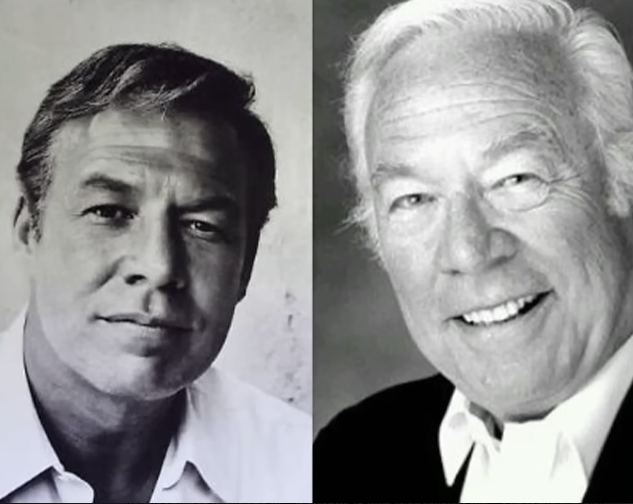
From the Battlefield to the Spotlight
Long before the cameras rolled and the red carpets appeared, George Kennedy’s first uniform wasn’t a costume—it was a soldier’s gear. At 18, he enlisted in the U.S. Army and fought bravely in the Battle of the Bulge under General Patton. It was one of the coldest, deadliest clashes of World War II. Amid snow and chaos, Kennedy earned two Bronze Stars for valor, standing tall—both literally and spiritually—at six foot four.
A devastating back injury nearly ended his journey. Two years in traction and a leg shortened by three inches would have broken most men. But George refused to let pain define him. When doctors told him his days of service were done, he simply found another way to serve.
A Voice for the Troops
For the next 15 years, he continued in the Armed Forces Radio Service, using his deep, steady voice to bring hope to soldiers across the world. His words carried warmth and steadiness—echoes of a man who had seen both horror and humanity on the battlefield. Through radio, he became a silent hero, reminding troops that they were not forgotten, that someone out there understood what it meant to serve.
His years in uniform taught him empathy, discipline, and resilience—traits that would later define his screen presence.
From Soldier to Star
When he stepped into Hollywood, George Kennedy didn’t chase fame; he simply brought truth to his roles. His powerful performance in Cool Hand Luke earned him an Oscar, and years later, in a poetic twist, he portrayed General Patton—the very man he once fought under—in The Brass Target.
To the audience, he was a rugged, commanding presence. To his fellow veterans, he was one of them—a brother who never forgot where he came from.
Heroes like George Kennedy don’t retire. They just find new ways to lead, to inspire, and to remind the world that courage wears many faces.
🎖️ Share this story to honor the heroes who carried both rifles and dreams—and showed us that greatness begins with service.